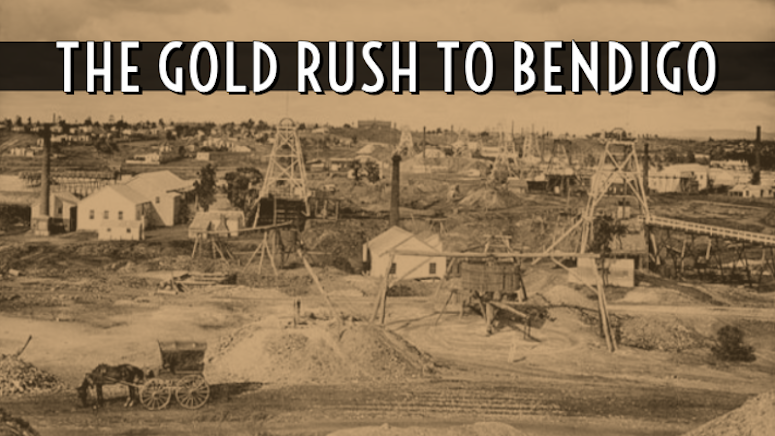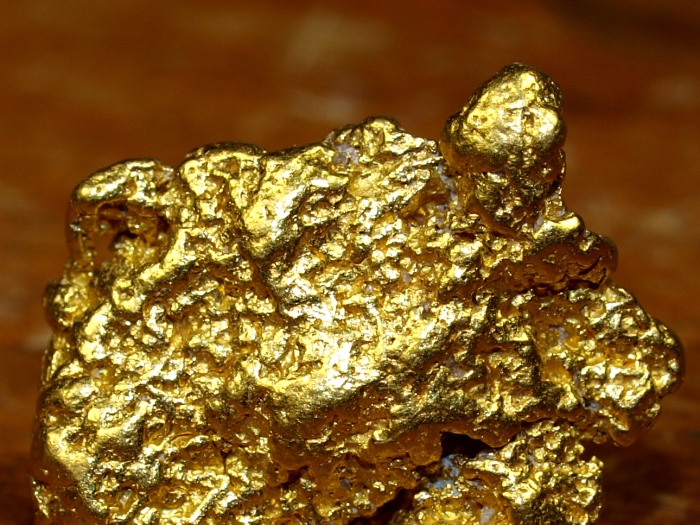
To a man who loves gold, the study of Victoria is fascinating and exciting. The region almost attained overnight fame due to the discovery of gold and the sudden boost in gold mining.
The discovery of the yellow metal in Bendigo, Ballarat, and a few other locations in Victoria triggered a gold rush. Fortune seekers arrived in thousands every week to get their hands on gold. In the early 1850s, there was a general consensus that Ballarat and Bendigo had the richest alluvial gold.
The gold glitter attracted miners from all corners of the world. It also lit up the local economy with new townships and business establishments spawning like mushrooms in less than a decade.
People began equating Melbourne to other great cities during the time; cities like London and Paris. The increase in wealth and growing population also earned the city the nickname Marvelous Melbourne.
The cultural and economic growth of Bendigo and the surrounding areas shaped the future of the state and the country.
Discovery of Gold in Bendigo, Victoria
Bendigo was at the center of one of the most exciting gold rushes ever witnessed. The wealth generated from the quartz gold enabled the locals to build churches, schools, and other infrastructure. Between 1850 and 1900, prospectors and miners found more gold in the state of Victoria than any other part of the globe.
In the second half of the 19th Century, the quartz reefs of Bendigo yielded millions of dollars of gold. Next to Kalgoorlie, Bendigo had the highest gold producing mines in the country.
It all started in 1851 when Mrs. Ferrell and Mrs. Kennedy – the wives of two pastoral property workers – found gold nuggets. As must be their regular routine, these two women were performing their daily chores – washing clothes – at Bendigo Creek when they found the yellow metal.
Within days, the discovery by Mrs. Kennedy made news throughout Argus. The announcement prompted the settlers nearby to try their luck at panning for gold.
The discovery had a typical effect and triggered the characteristic reaction. In December 1851, there were 800 miners in Bendigo Creek looking for gold. Within six months, the number of gold miners increased to 20,000.

Gold Mining in Bendigo, Victoria
For the first 3 years, the rich alluvial deposits of the Bendigo goldfield became the primary source of the yellow metal. As the output dwindled, the miners turned their focus underground, on tapping the quartz reefs in Bendigo and Eaglehawk. Within two years, the quartz reefs became the sole means of gold extraction.
The origin of the place’s name still remains a mystery. But, it’s widely believed that a person with the nickname ‘Bendigo’ lived in the area. So, somehow people started calling the town as ‘Bendigo’.
Experts claim that in the first 10 years (from 1851 to 1860), the alluvial deposits yielded up to 4 million ounces of gold. The initial find alone amounted to one-fifth of all gold mined from the goldfield.
The goldfield spanned across an area of 4 x 16 km and accommodated 37 distinct quartz reefs that contained the precious metal. During the course of its operation, the Bendigo goldfields had many firsts and broke many records. The allure of gold filled the air with excitement and the miners spared no effort to extract the precious metal.
Deep shaft sinking was the preferred technique to extract gold in the 19th Century. The Bendigo goldfields alone saw the creation of more than 5000 sink shafts of various depths. The goldfields in Bendigo hold the record for the largest cluster of deep shaft mines in the world. There were 67 shafts that were 600 meters deep and as many as 11 sink shafts of 1000 or more meters deep.
The Last Commercial Gold Mine in Bendigo
The last commercial entity that extracted gold from Bendigo was the Central Deborah Gold Mine. During its heyday, from 1939 to 1954, the company extracted nearly a ton of gold from the mines in Bendigo. Recalling life during the days of the gold mine, its former manager Ray Beer said, in those days, gold literally flooded the streets.
He said that people could easily pay for drinks and lollies from the money earned by panning the gutters after heavy rain in Bendigo. The Central Deborah Gold Mine was closed decades ago, but the remnants of the rich past; literally, the golden era of Bendigo is still visible. Even today, there are a few reminders of the old country that have turned into tourist attractions.
When the mine closed its operations, the workers abandoned the sink shafts. The company covered some of the sink shafts. But the mines that were still open became tourist attractions in 1986. Now, tourists take guided rides deep down the sink shaft to see the fascinating tunnels and experience the grueling conditions under which the miners operated. No tourist can go into the mine without a guide and safety gear.
